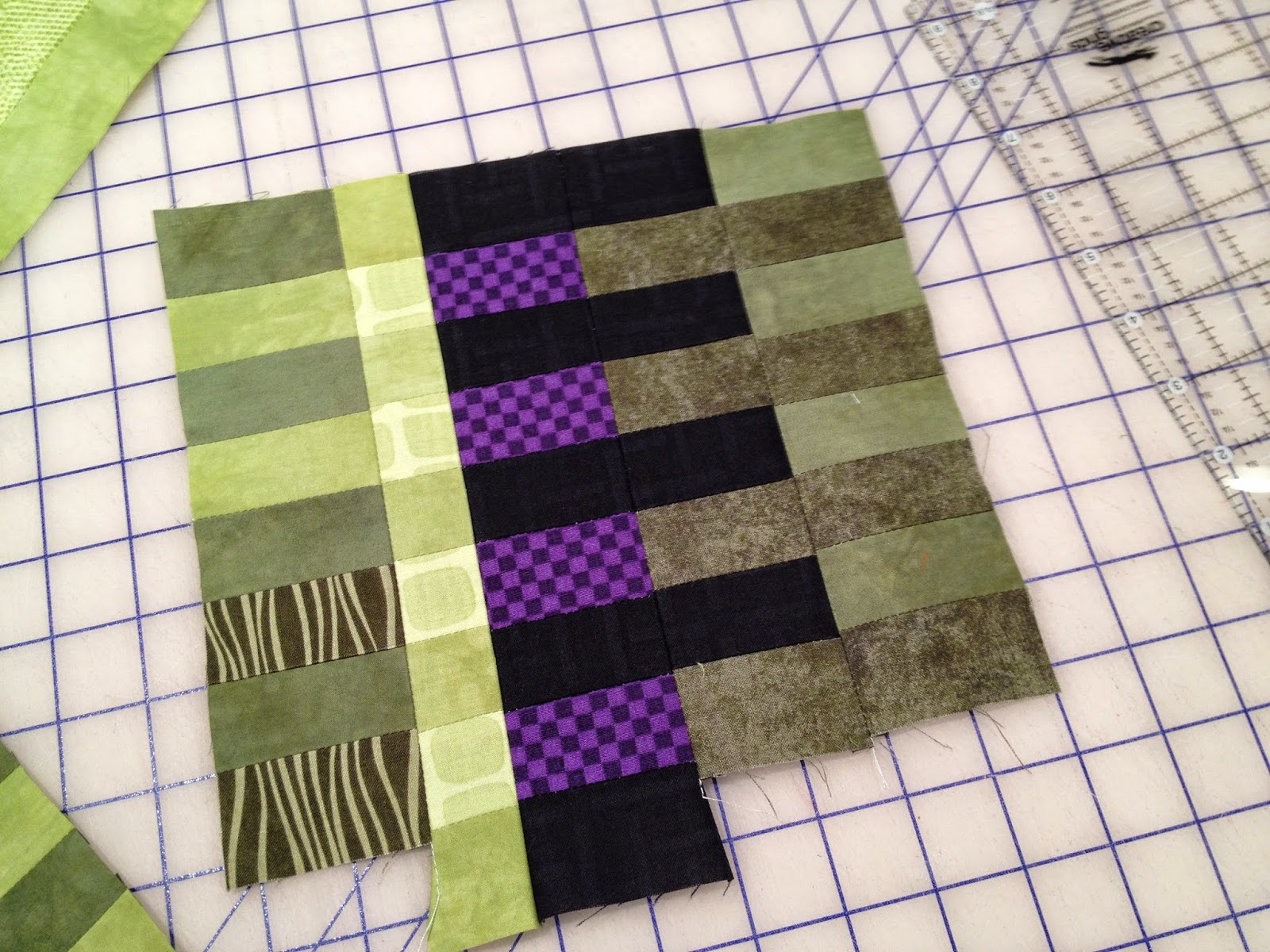jill here...Within the past few years, I've become a fan of works by Anni Albers. She was a German American artist, working mostly in textiles and later in printmaking. She studied at Bauhaus, Germany with many other modern artists, married Joseph Albers and together they immigrated to the US in the 1930s, prior to the war.
The Museum of Modern Art in NYC has a collection of her textiles and prints.
I'm intrigued with Alber's line work and it's applicable translation to quilt making. The juxtaposition of the lines is interesting; some lines are sharp contrast, others subtle with their stops and starts. I found the exploration of these lines similar to the designs in our pattern Torte, totally dependent on the arrangements of the blocks. So when I made some blocks for " You Want A Piece of Me?", I utilized some of the line work.
Size and Color were our challenges; one side of the block had to be 9.5" (unfinished) and the color was chosen by the recipient. This first fabrication explored the color acid green. I was lucky that Penny shared some of her private, hand dyed collection so that I could get it right! We could add any other supporting colors to the arrangement. So I thought I'd punch it up with some orange!
As you can see from the pictures there was my usual flight of ideas! I tested colors, values, direction, mix of solids with some prints. If I were to experiment again, I would follow this recipe:
- 1 1/2 " strips cut from a WOF / cut in half to yield 2 strips. Combine it with another value or color to make a strip set of 4. Four strips in a set are easier to work with as you can turn them either direction (to use fabric A on top or fabric B on top).
- When you use one value, use it again in another combination.
- Use very dark and light values with discretion.
- Use very saturated, bright colors with discretion.

- Maintaining a horizontal orientation, I cut 3 1/2" pieces. I used this measurement because it was 1/3 the size of the finished block so seemed like an appropriate choice.....but later chose to cut a strip or two down to 1 1/2" wide. Some were larger for variety.
Three combinations that utilize in common values.
Less is more...more was just too much for this small composition.
Getting closer to a pleasing ending. I liked the strength of the black and I knew Penny would too. It has a pleasing combination of values in an asymmetrical balance. If I had a larger block, I might shift the values a bit but time to move on.
The finished block!
This is another design attempting to use a variety of colors. In this small composition, I had to edit.
Some transparency was achieved. The balance was countered diagonally .
'till next Tuesday....








 n
n

























